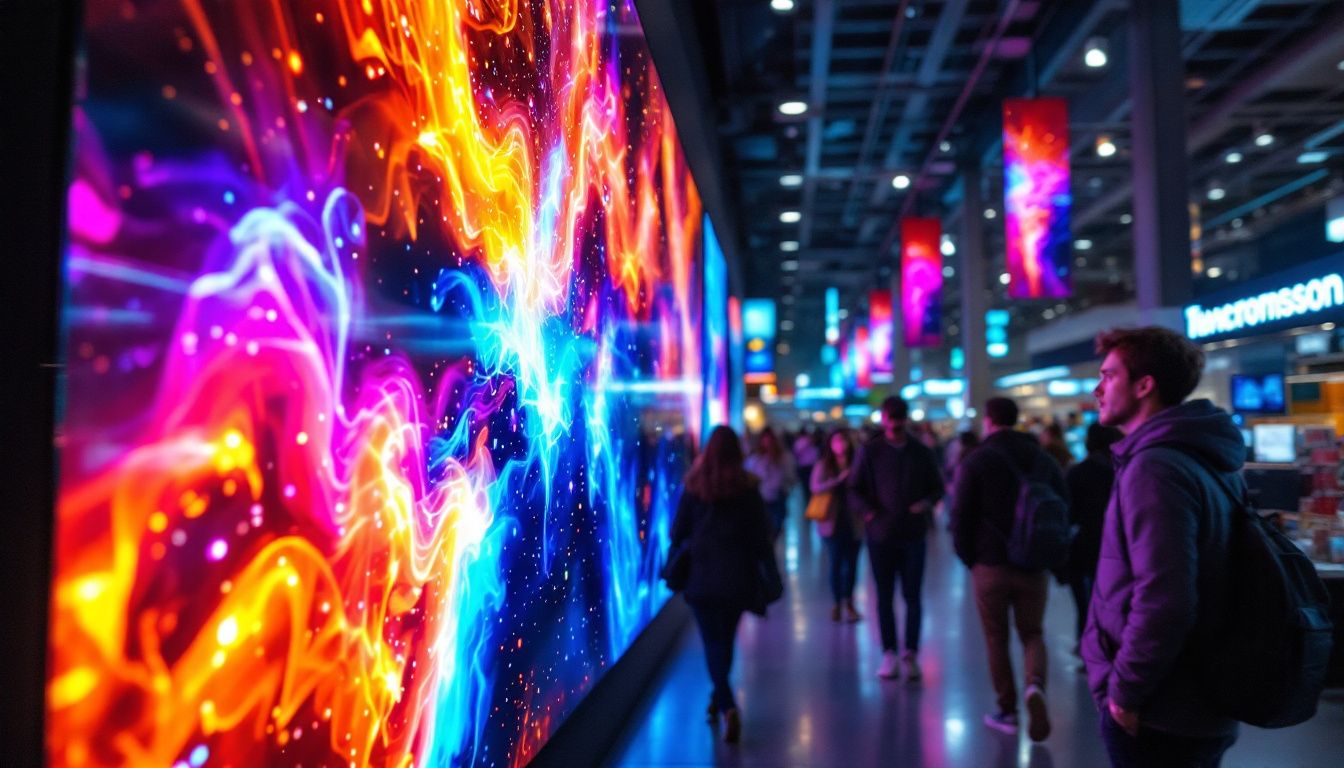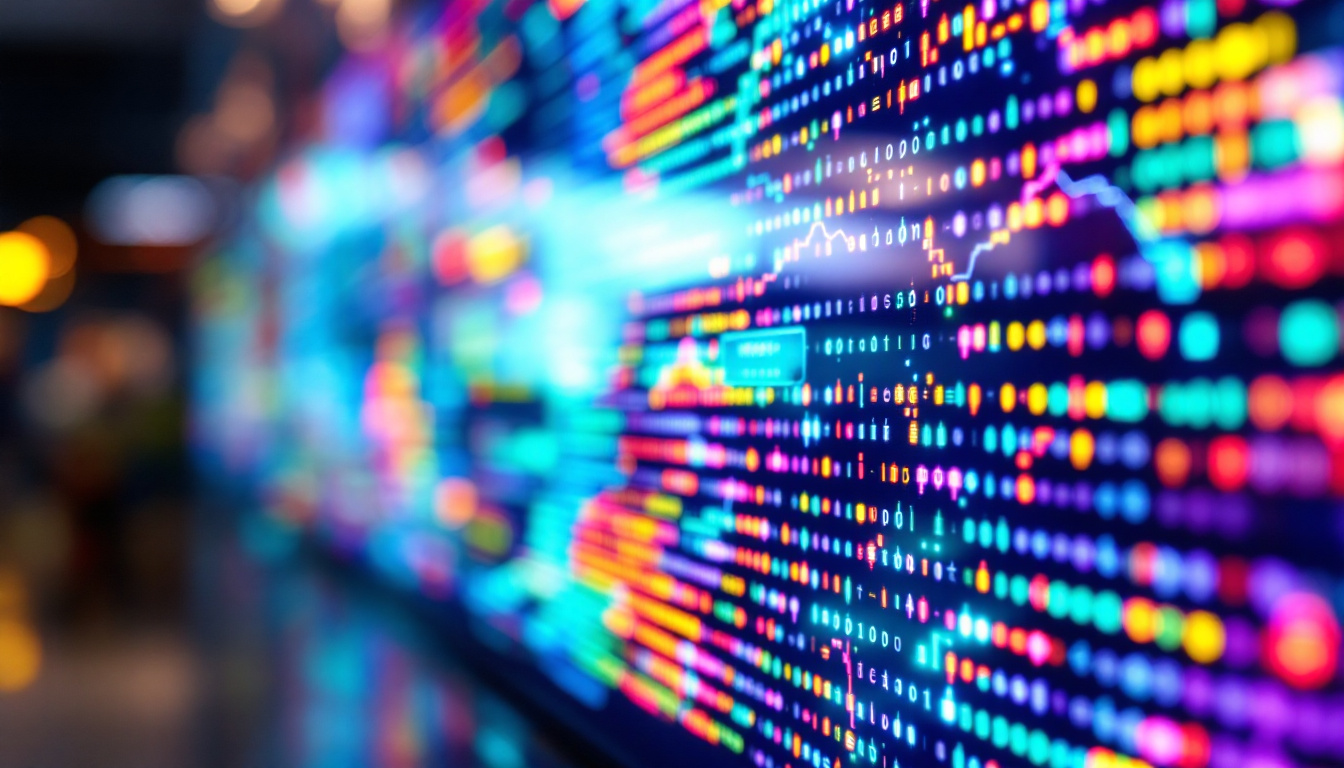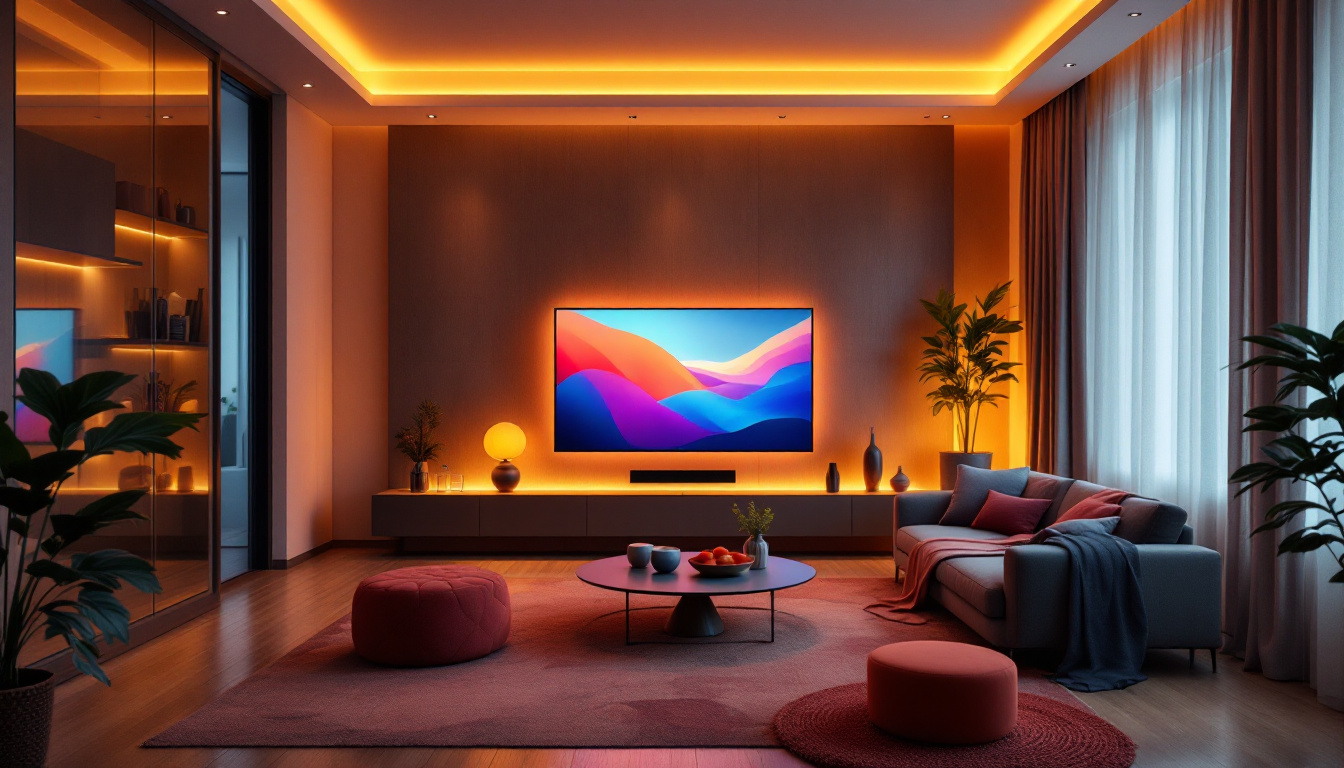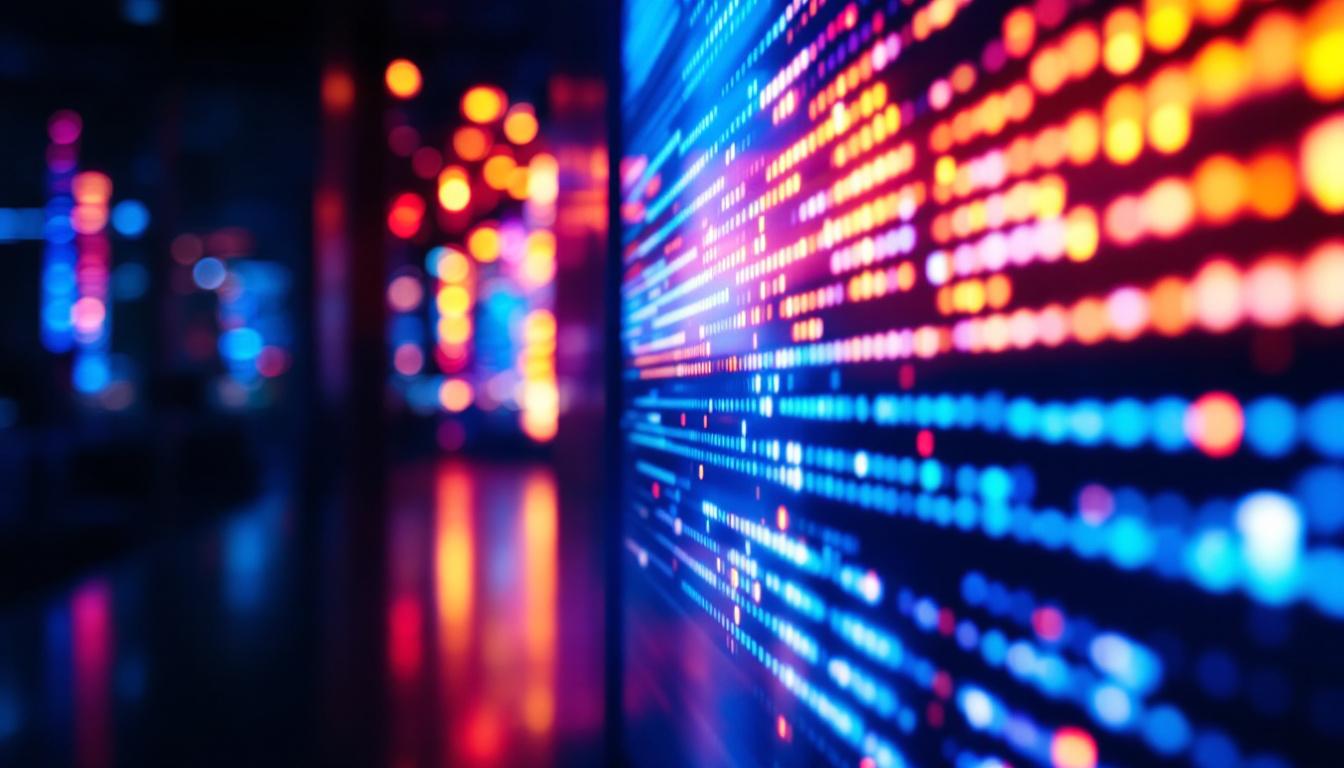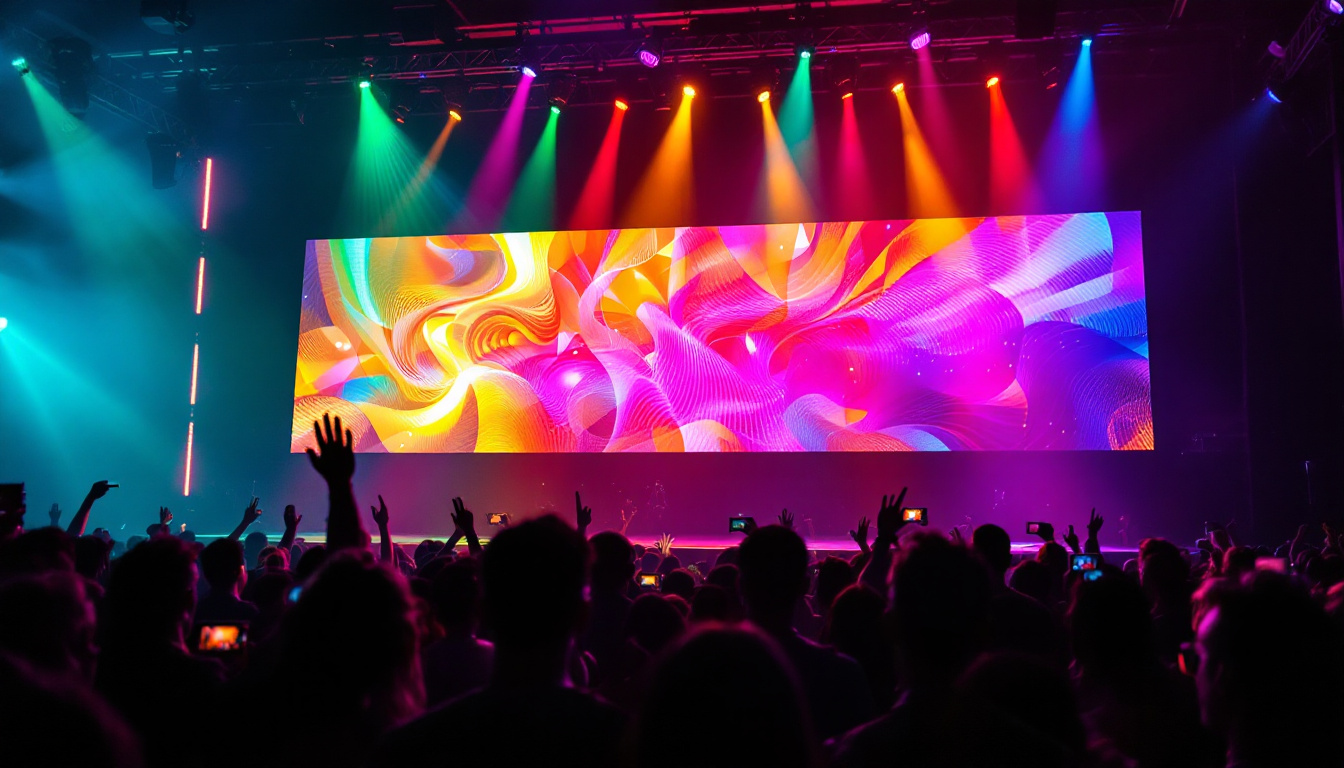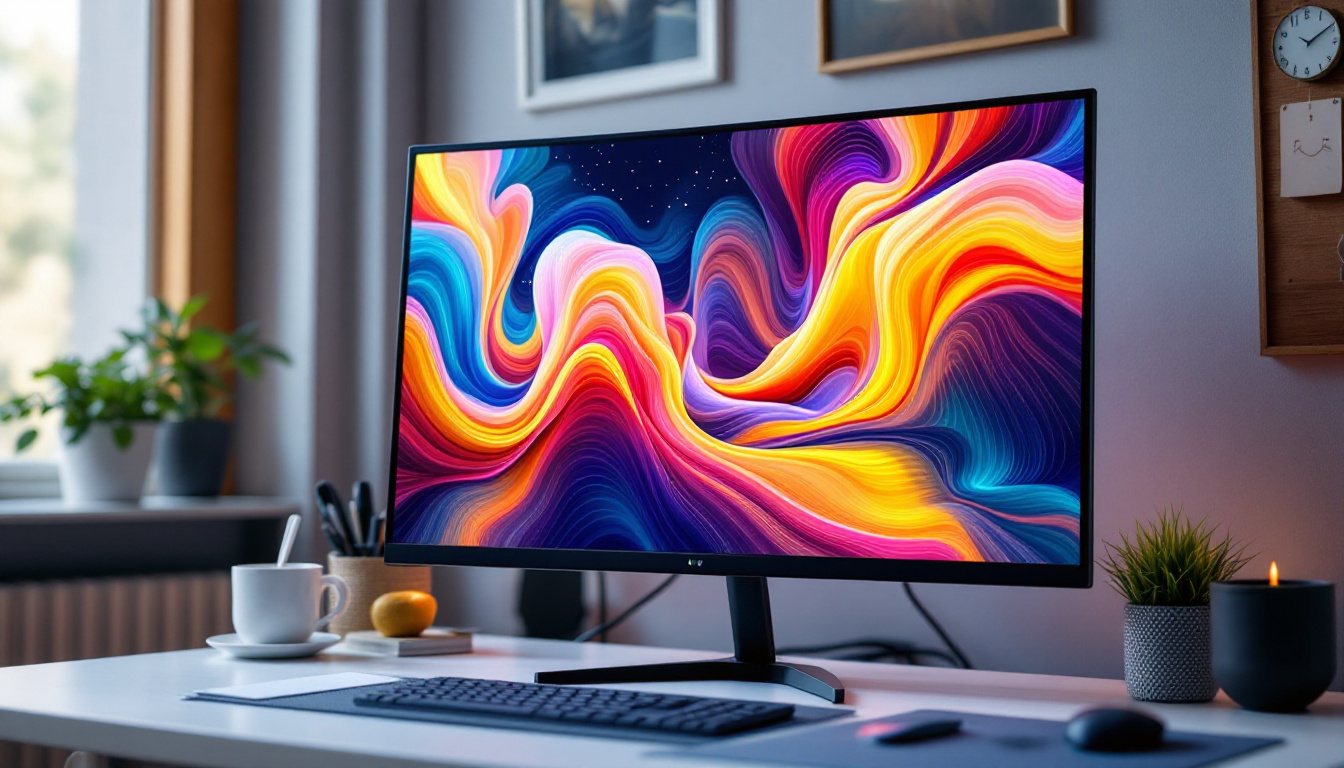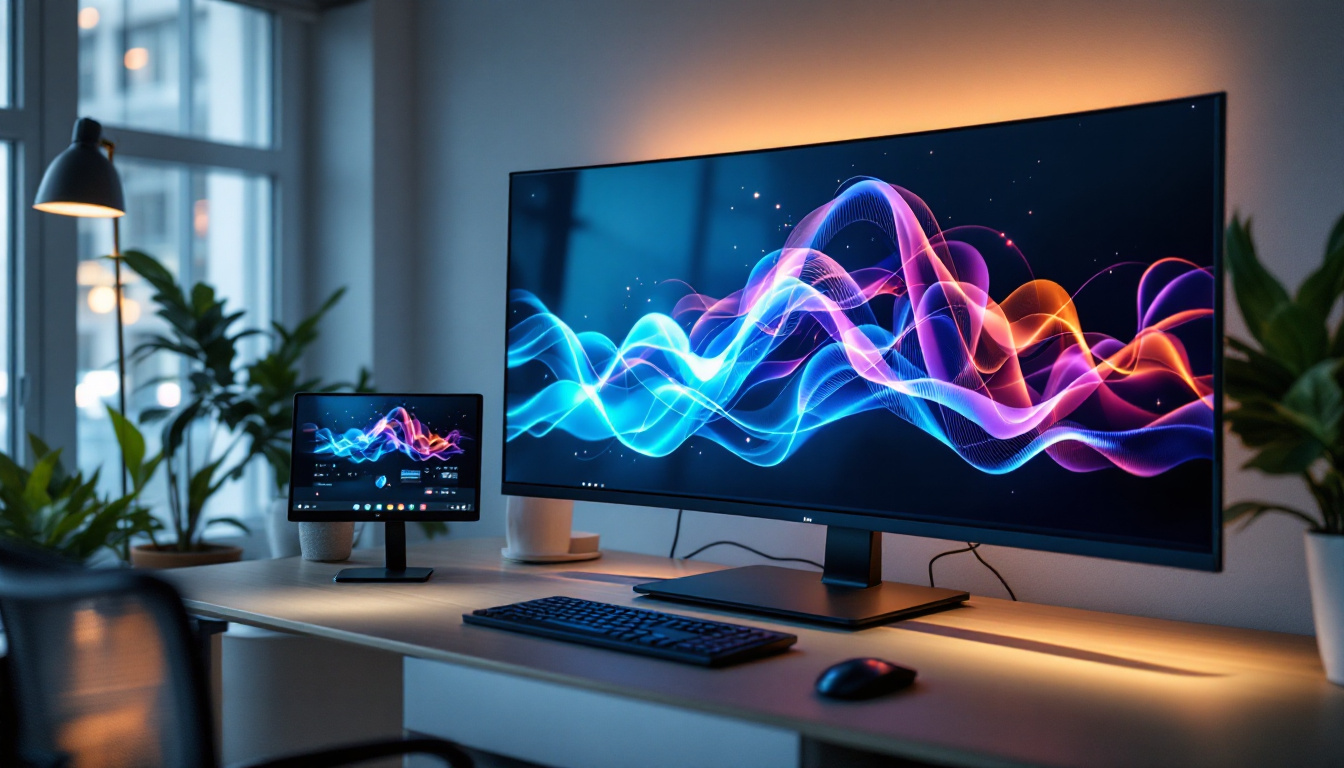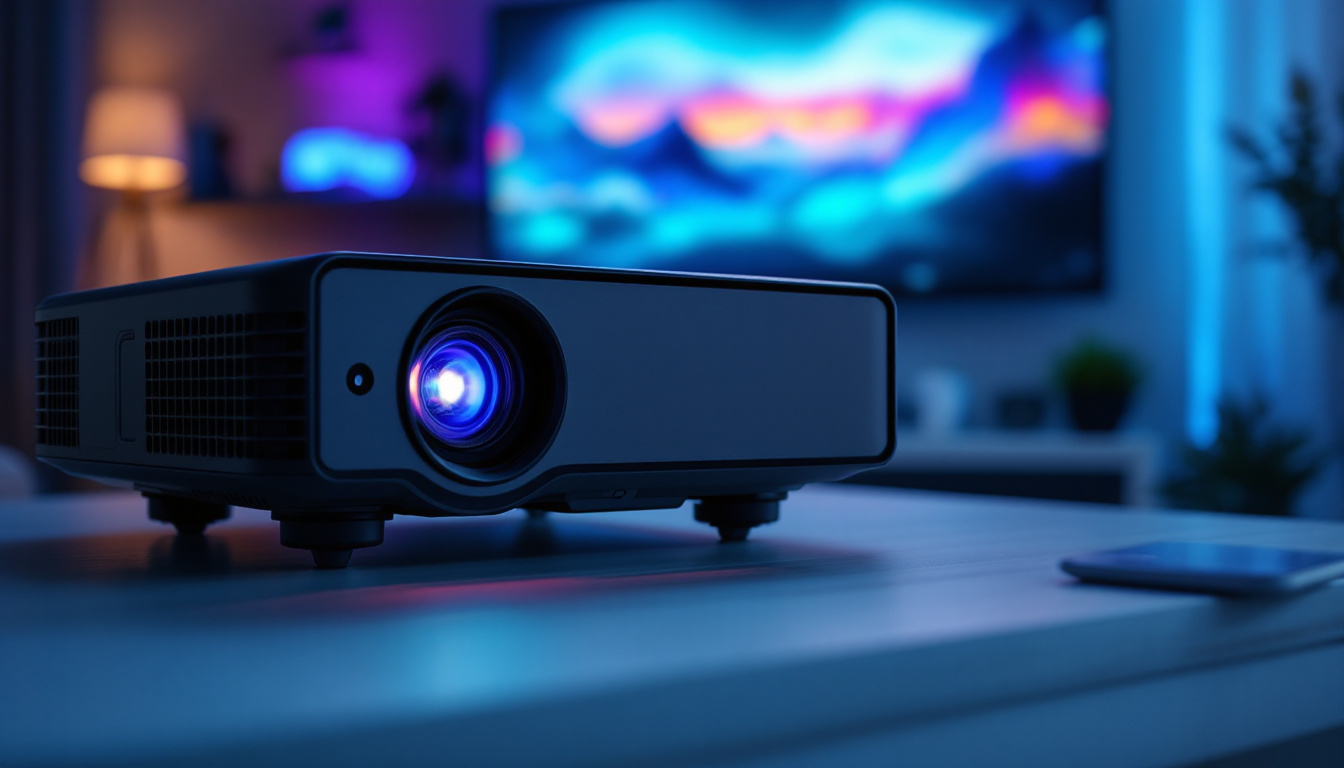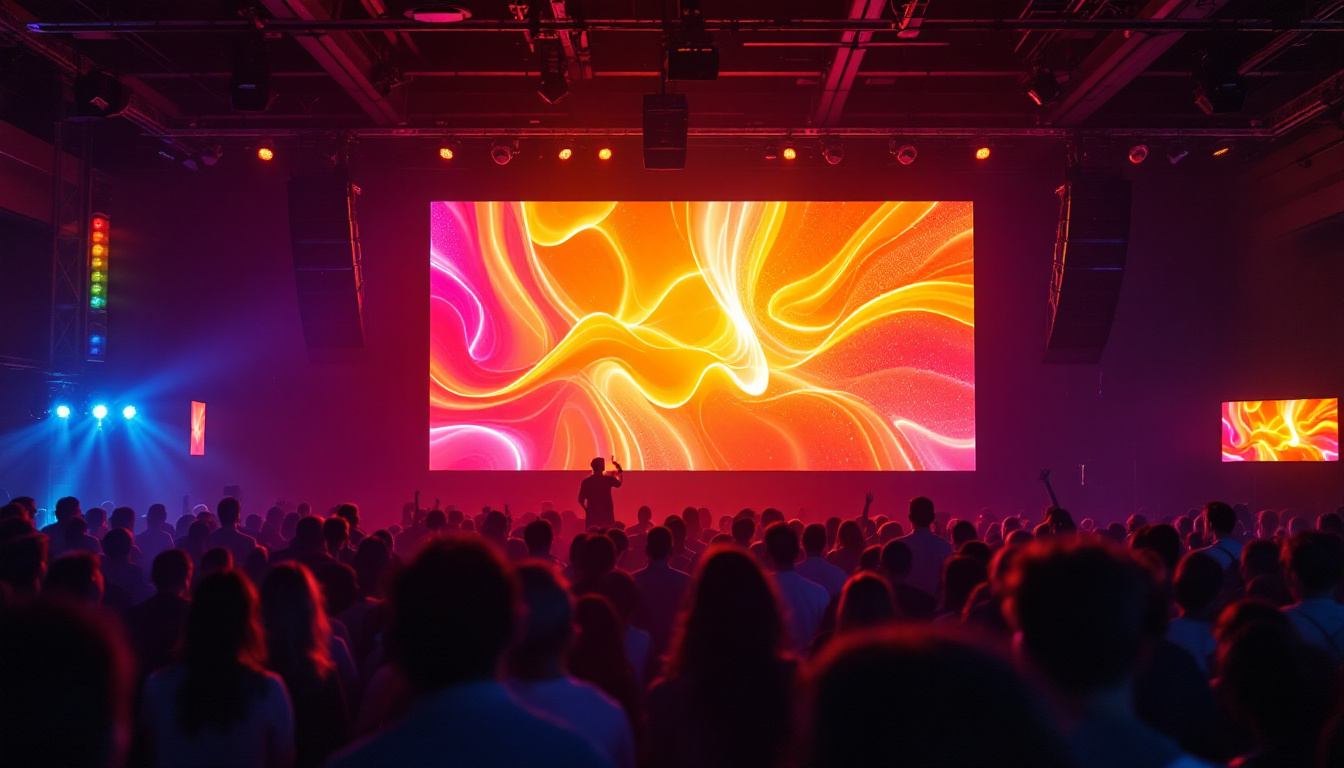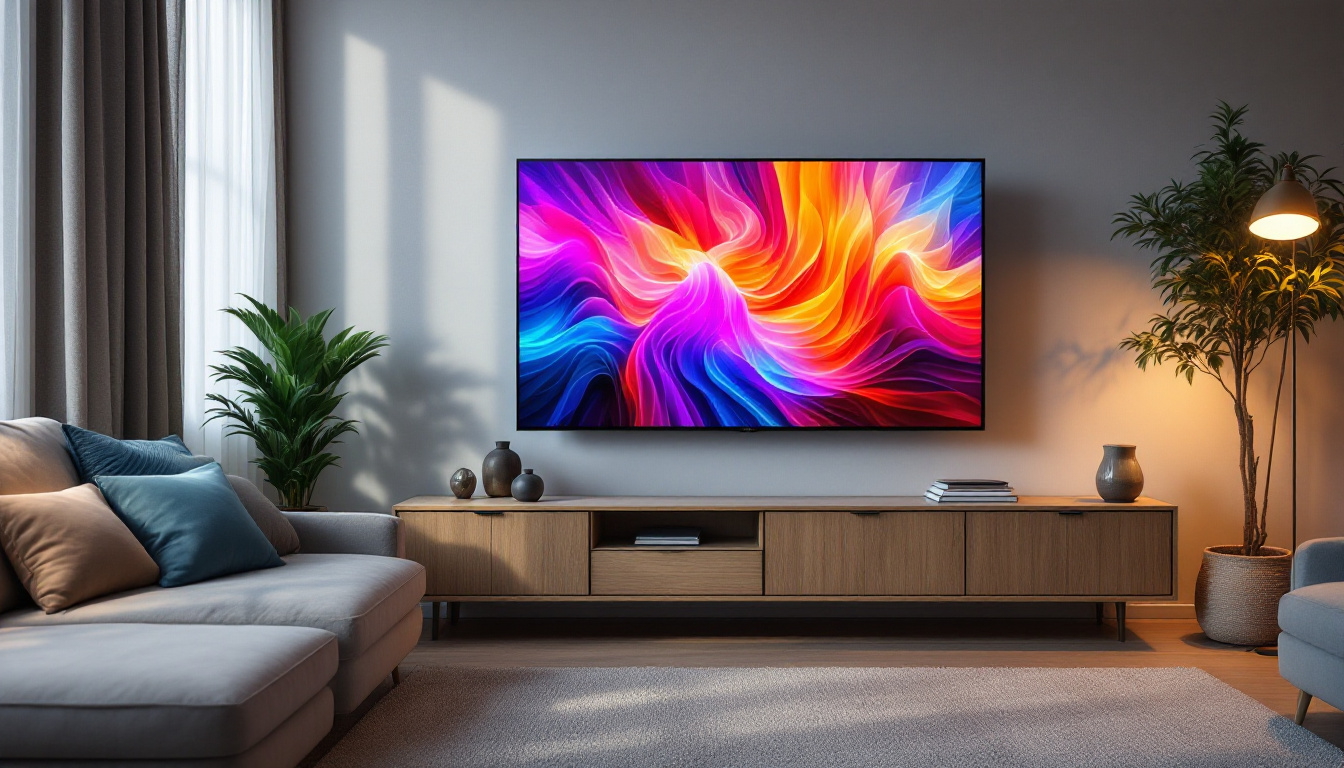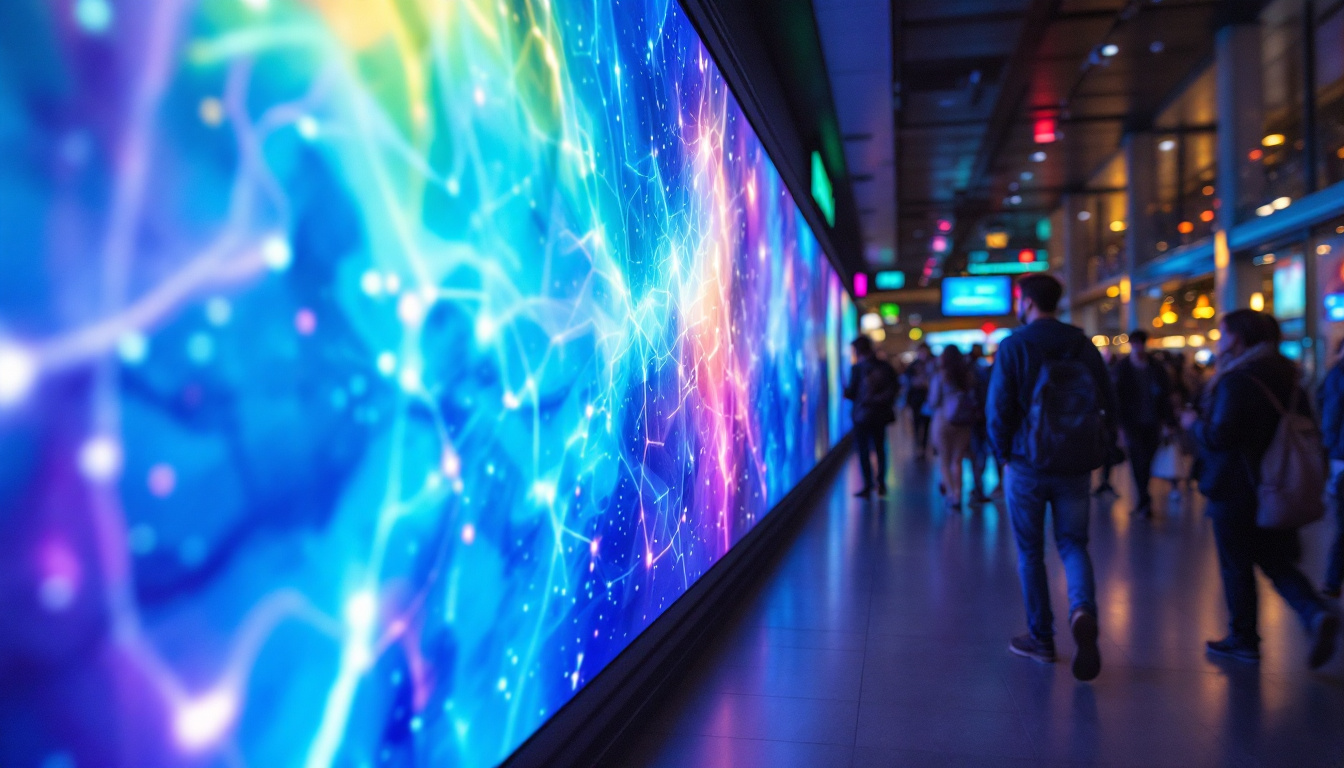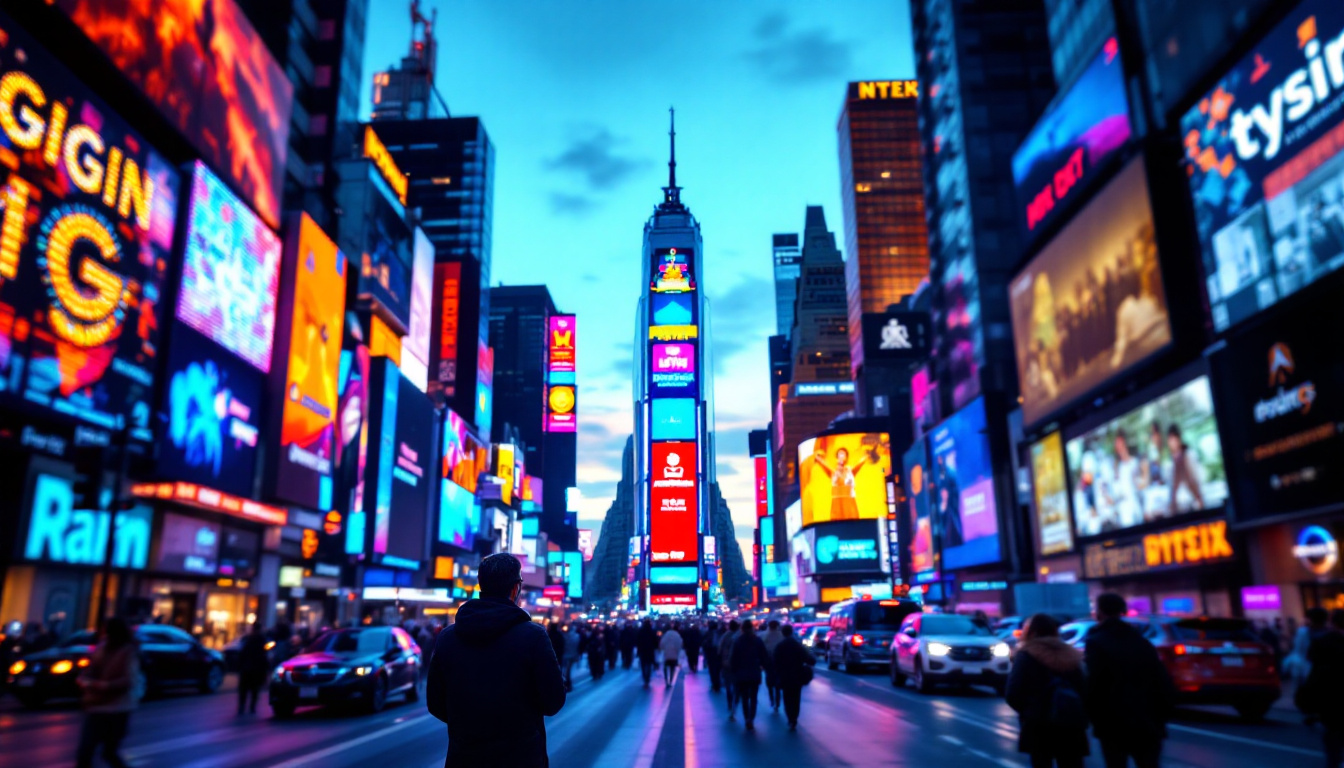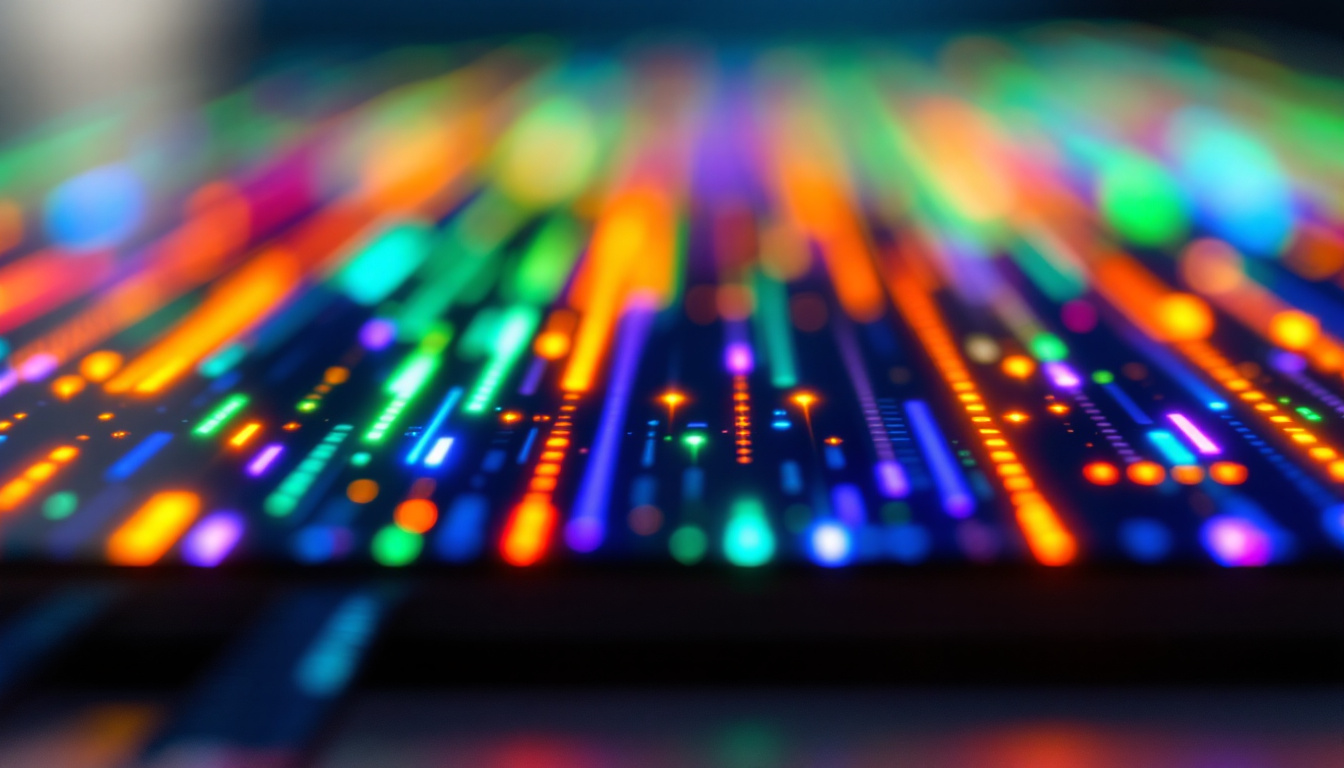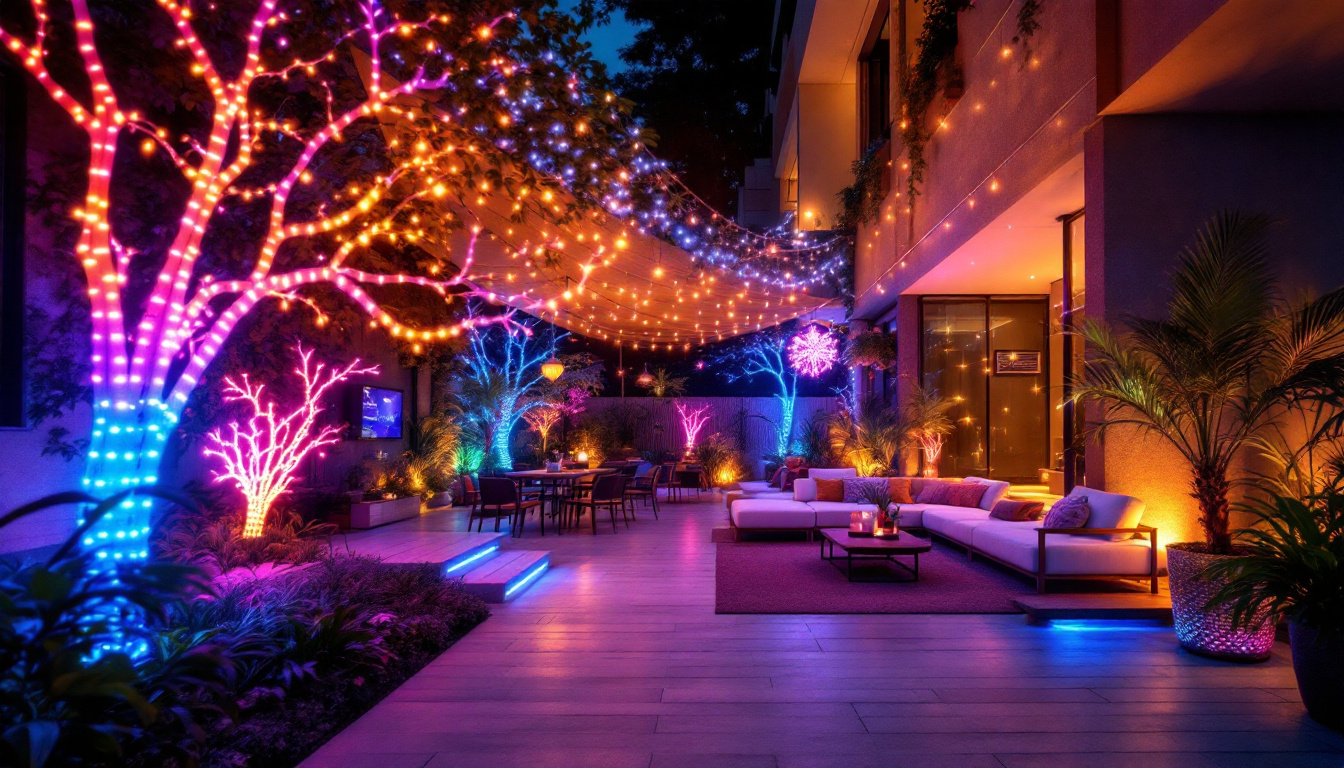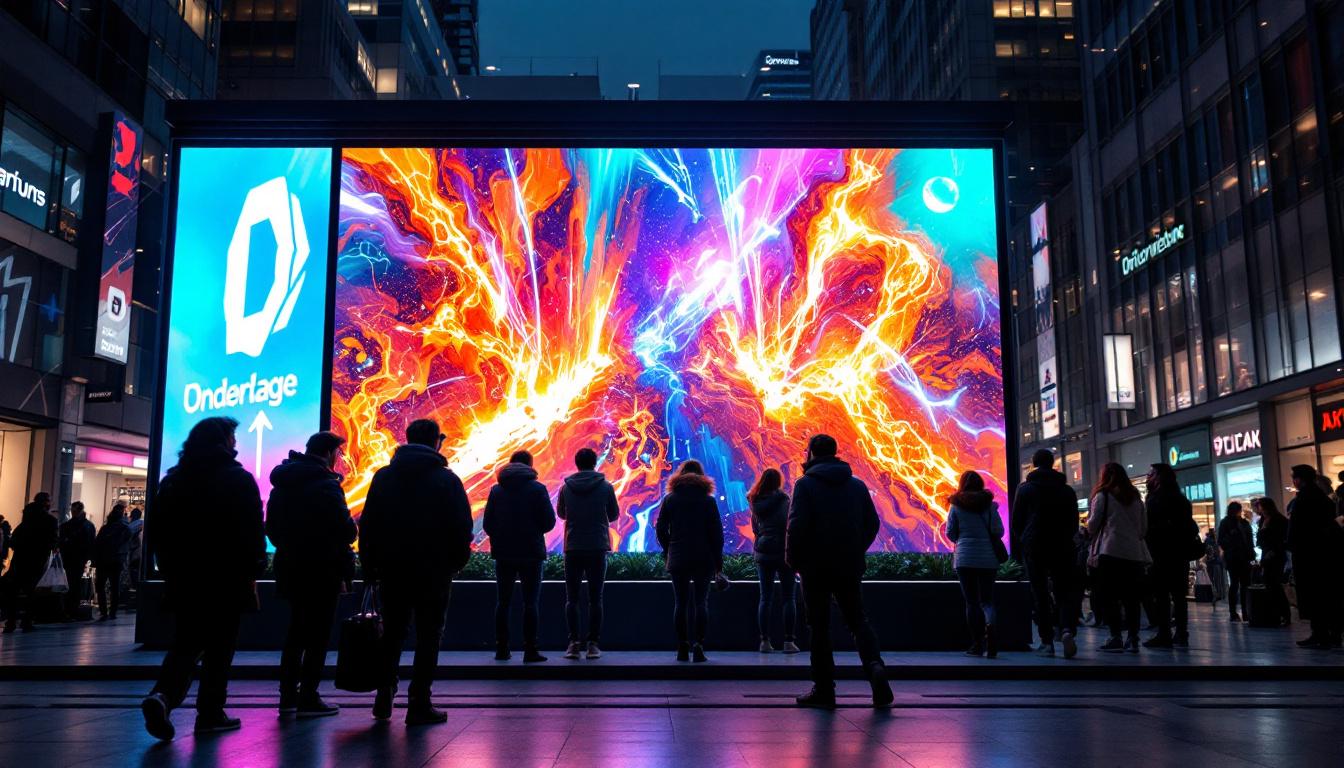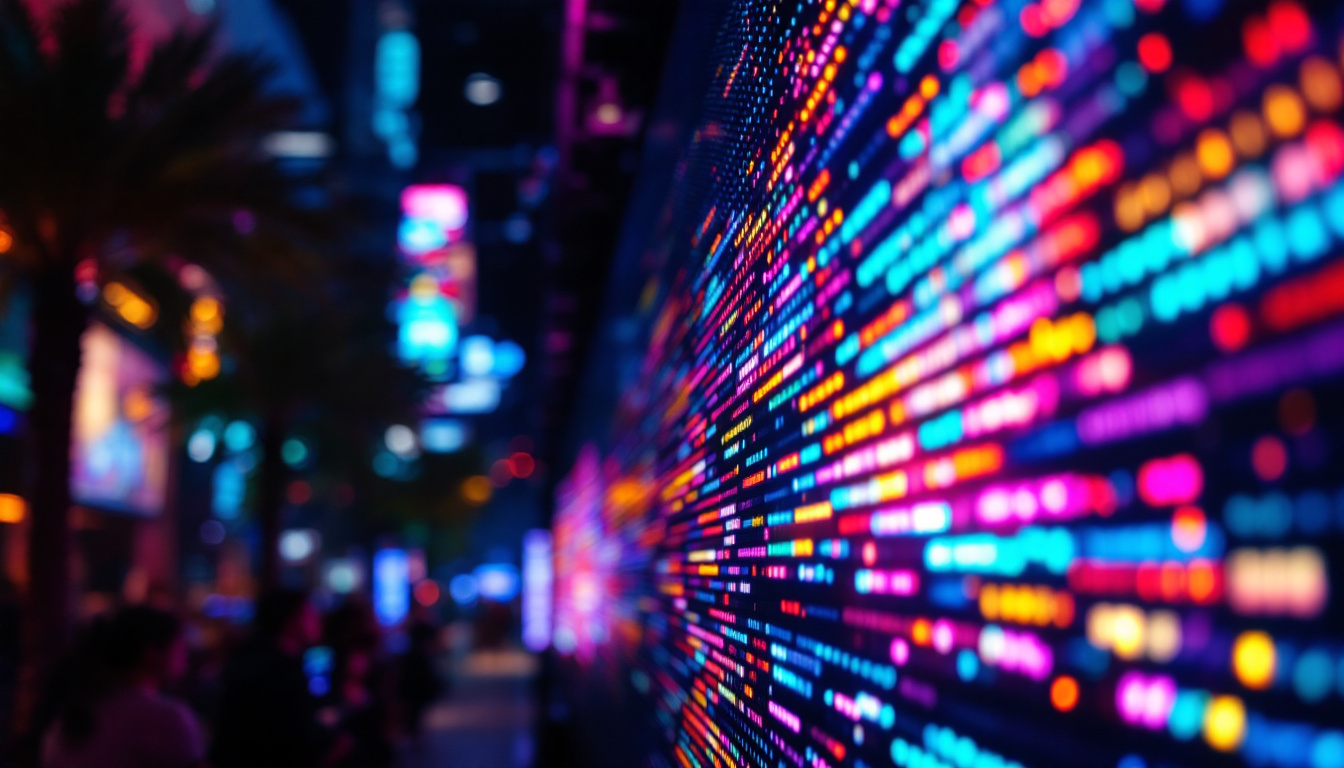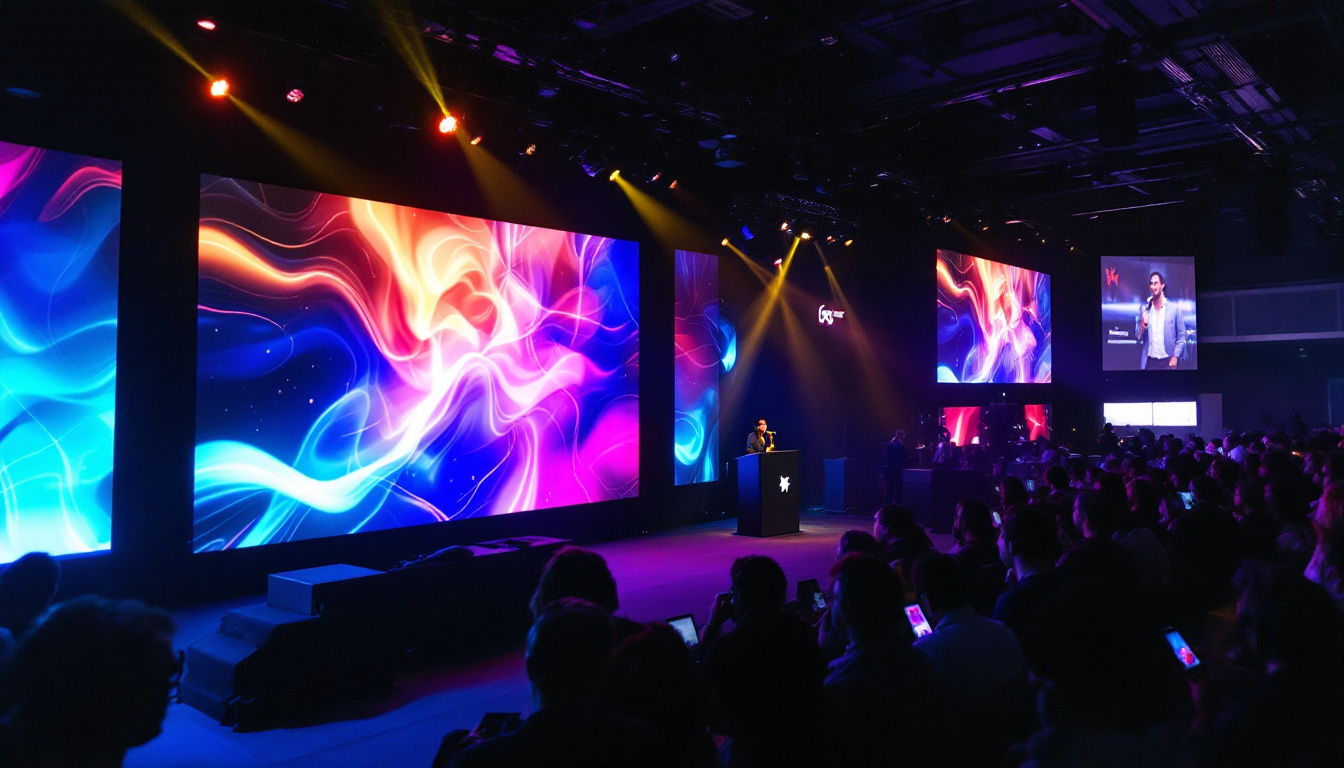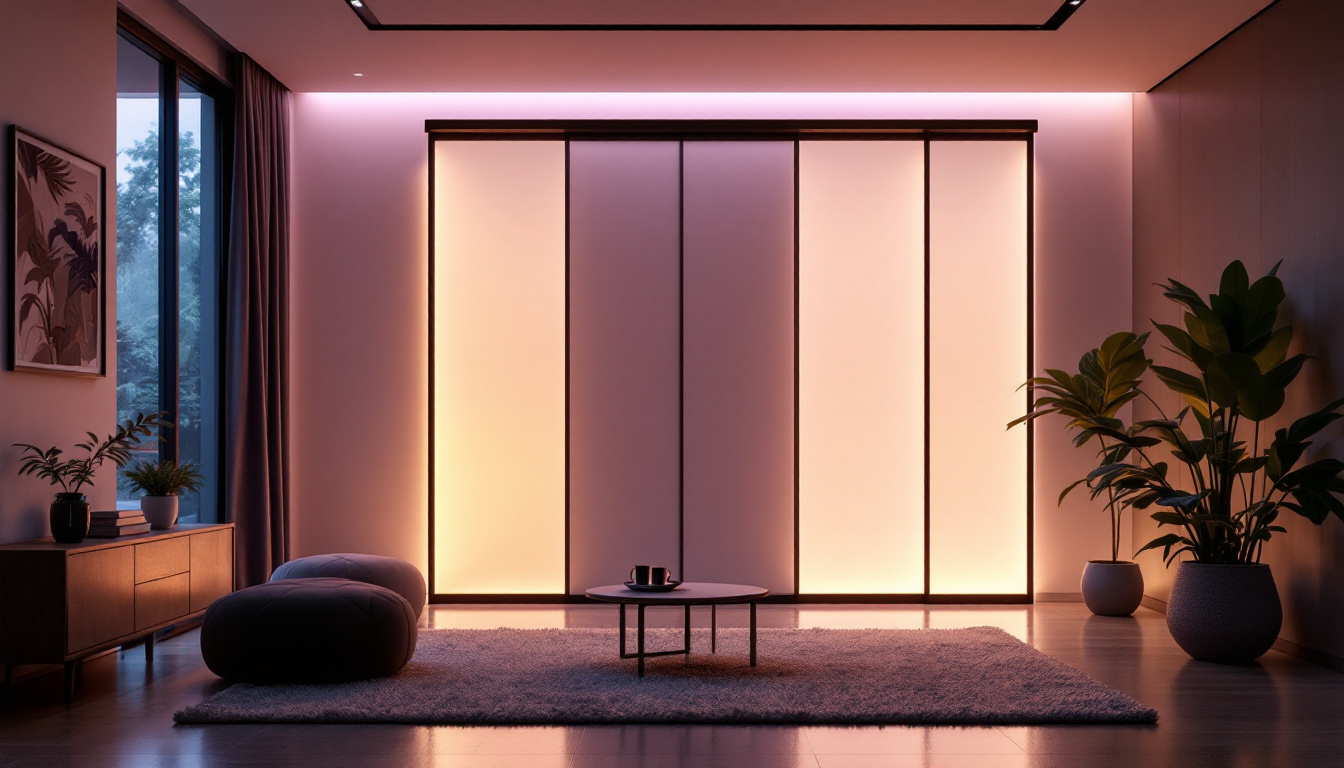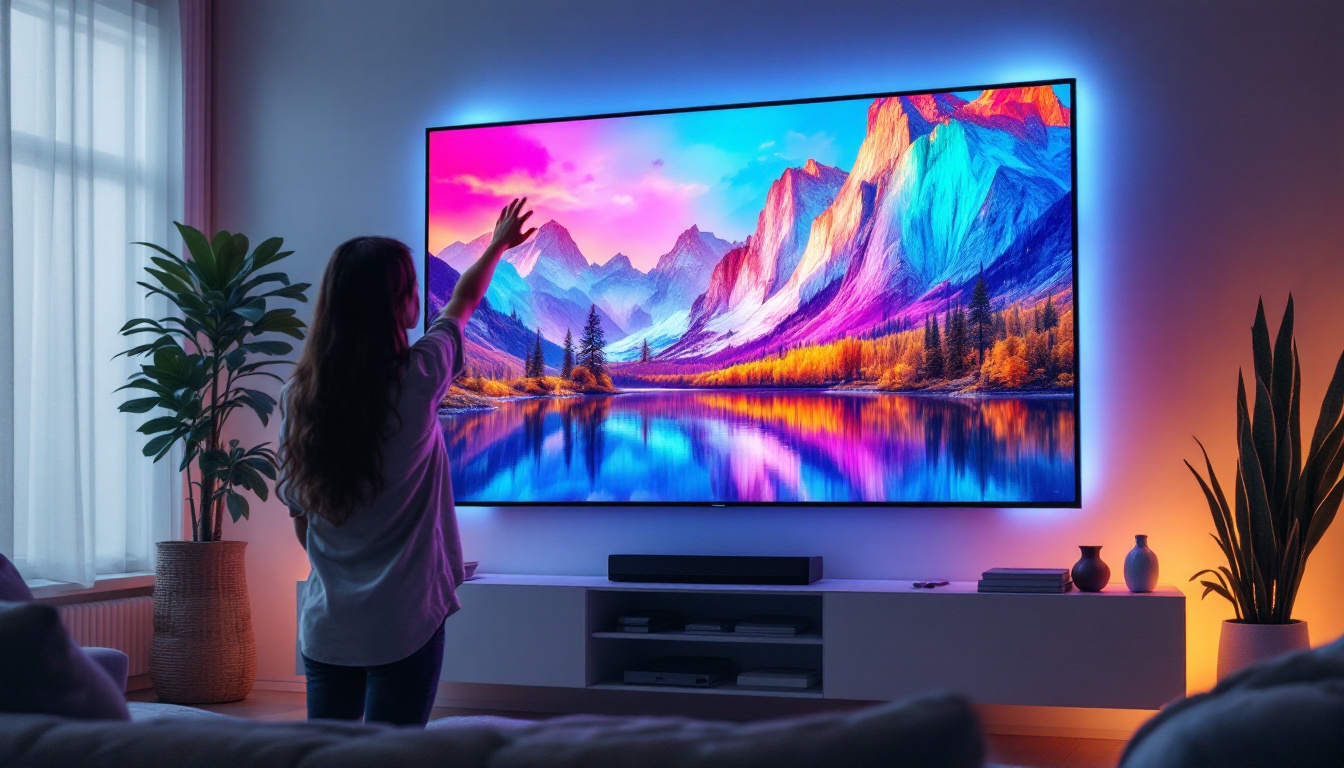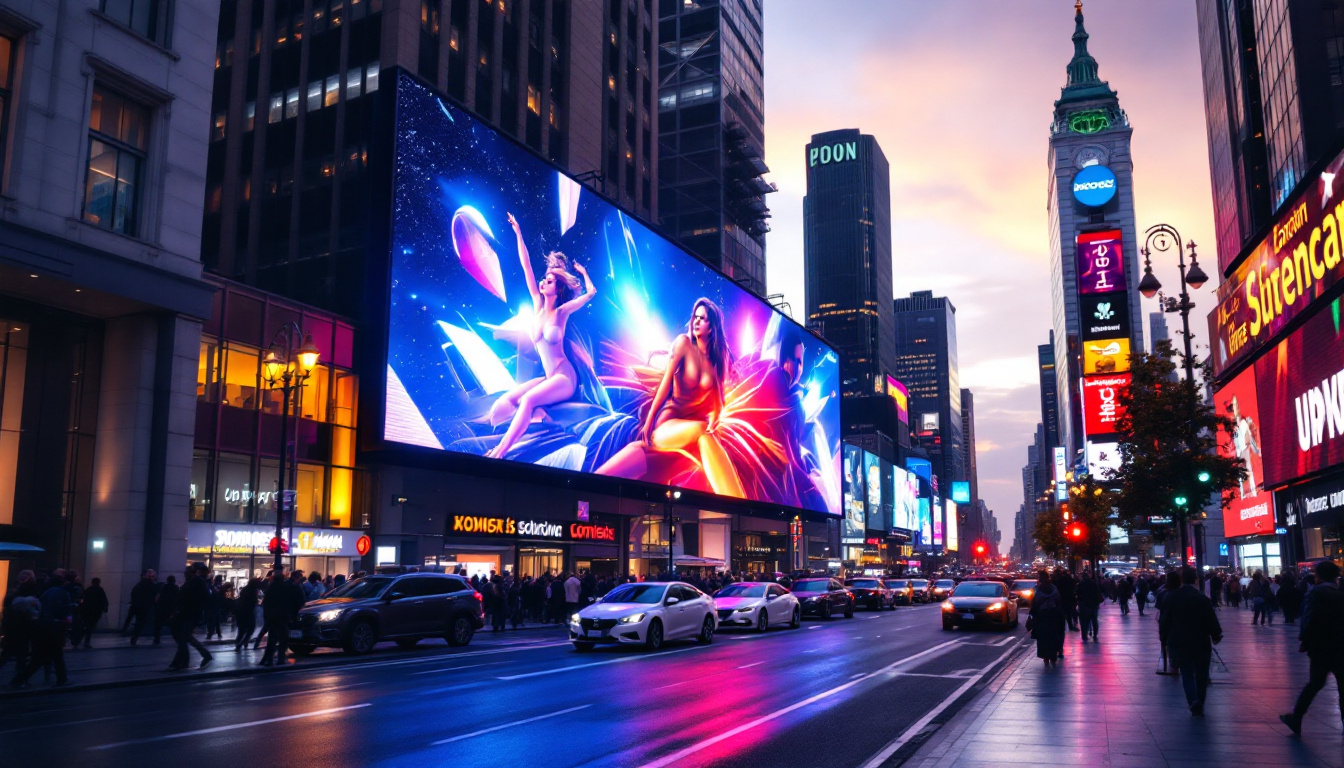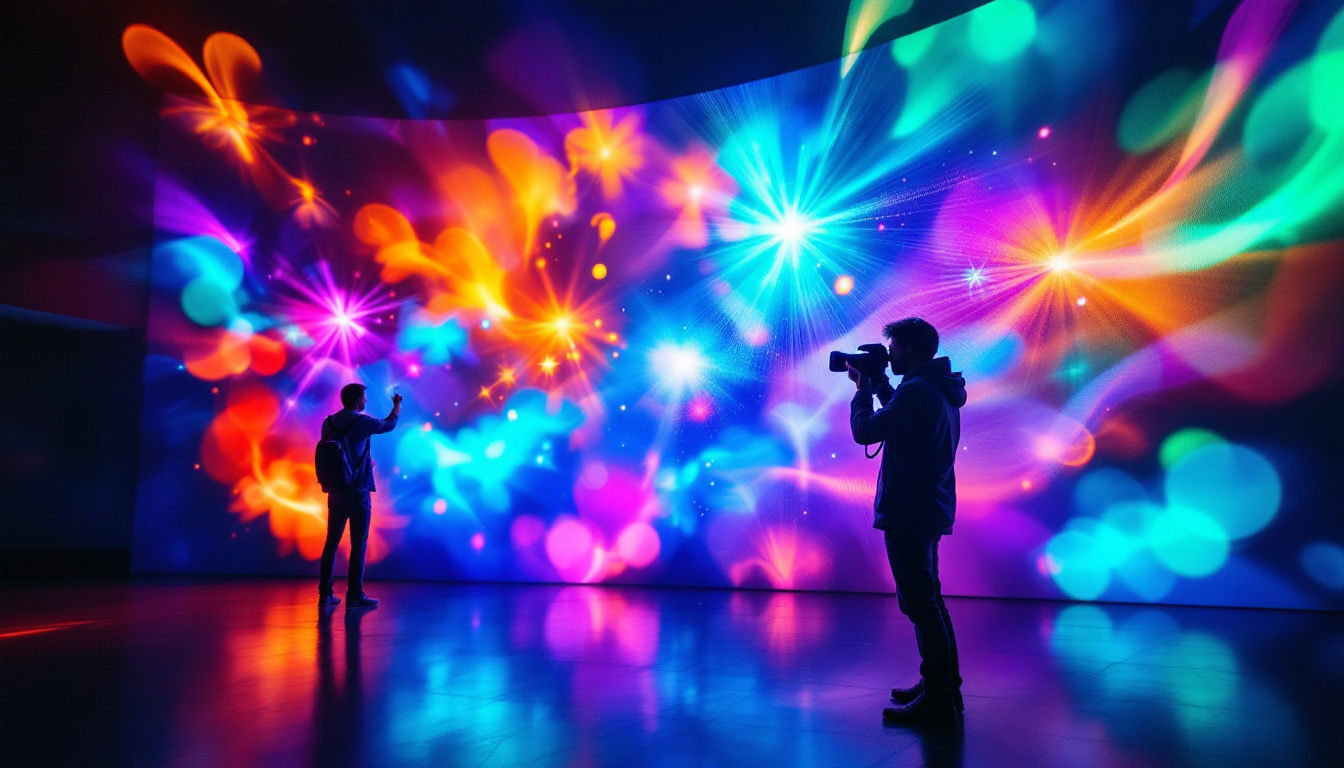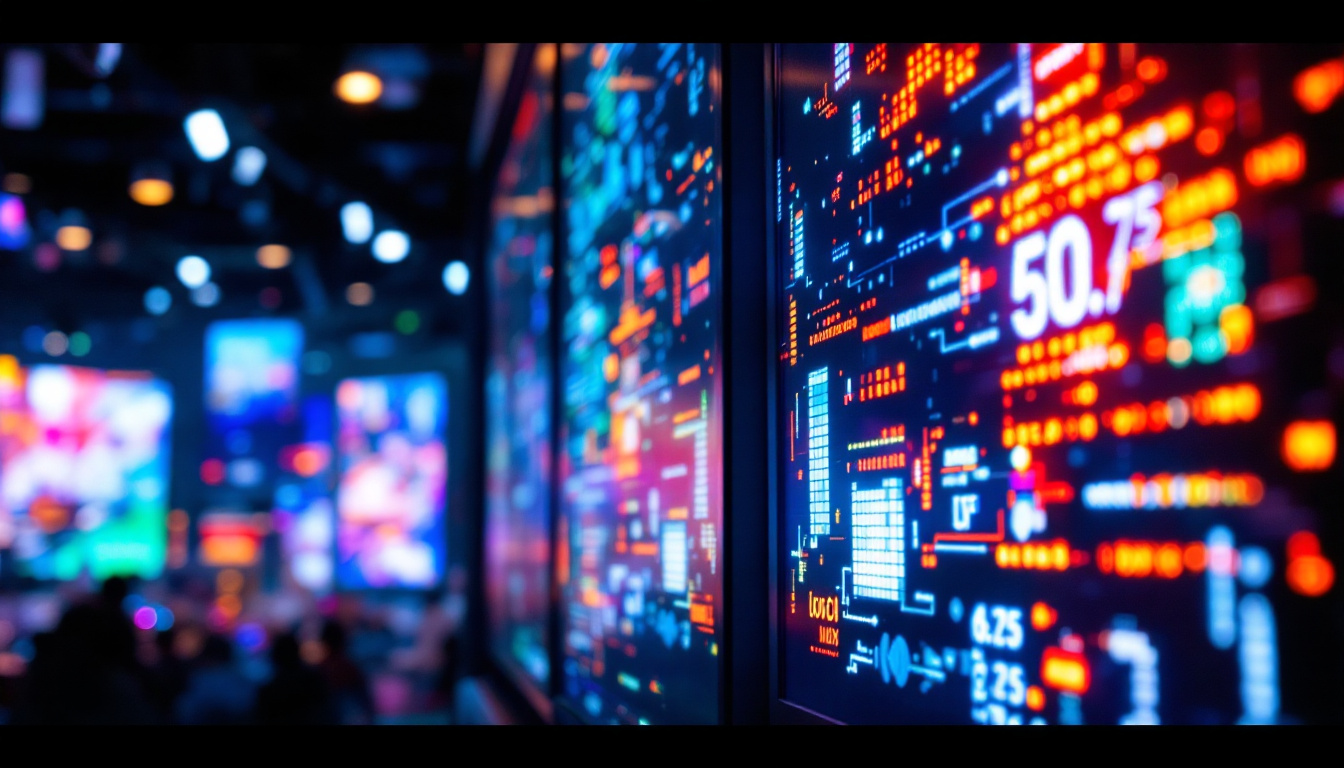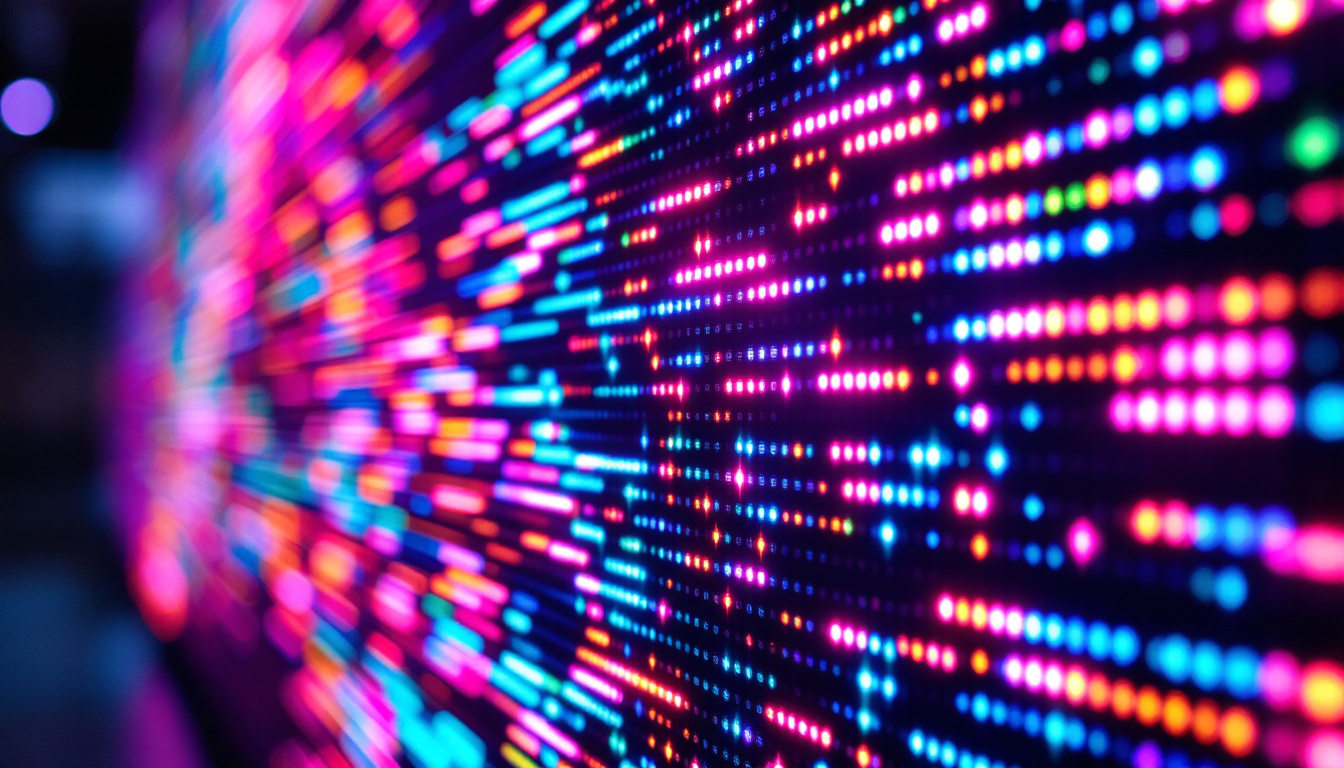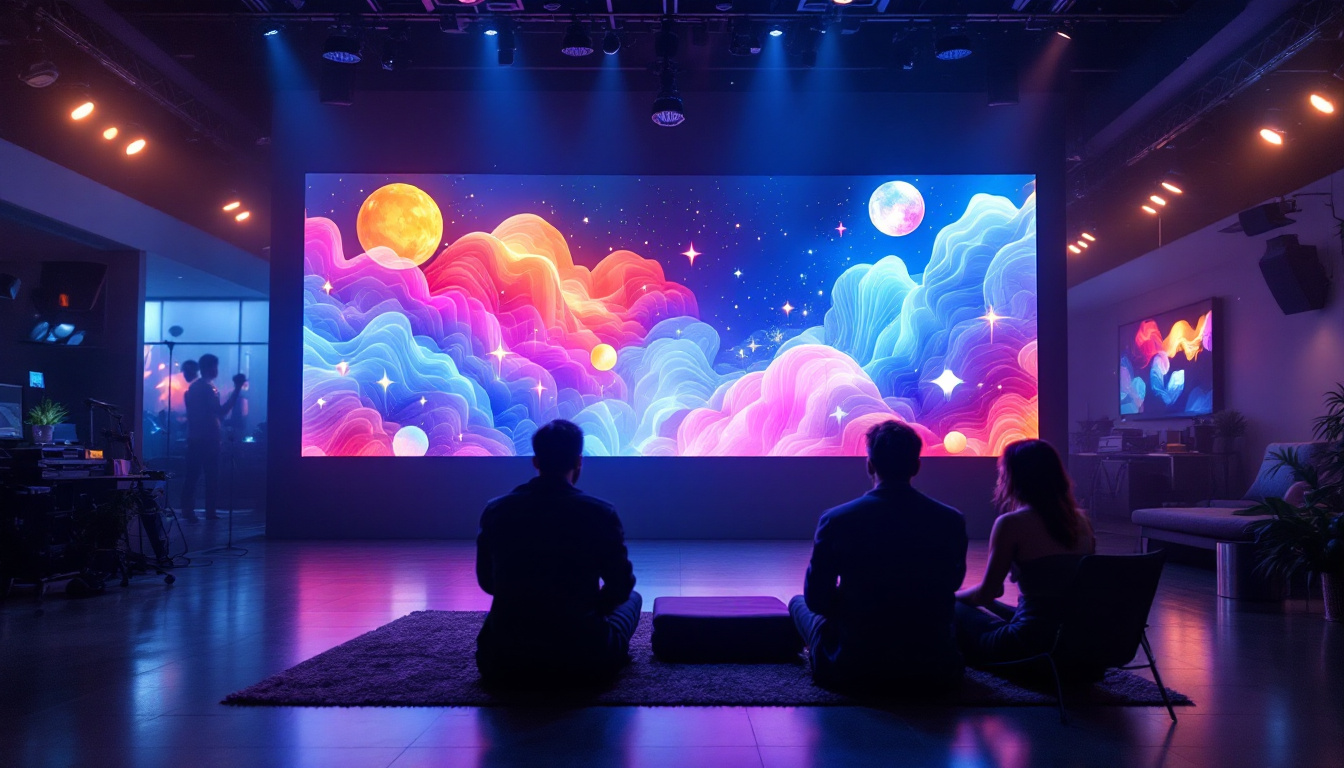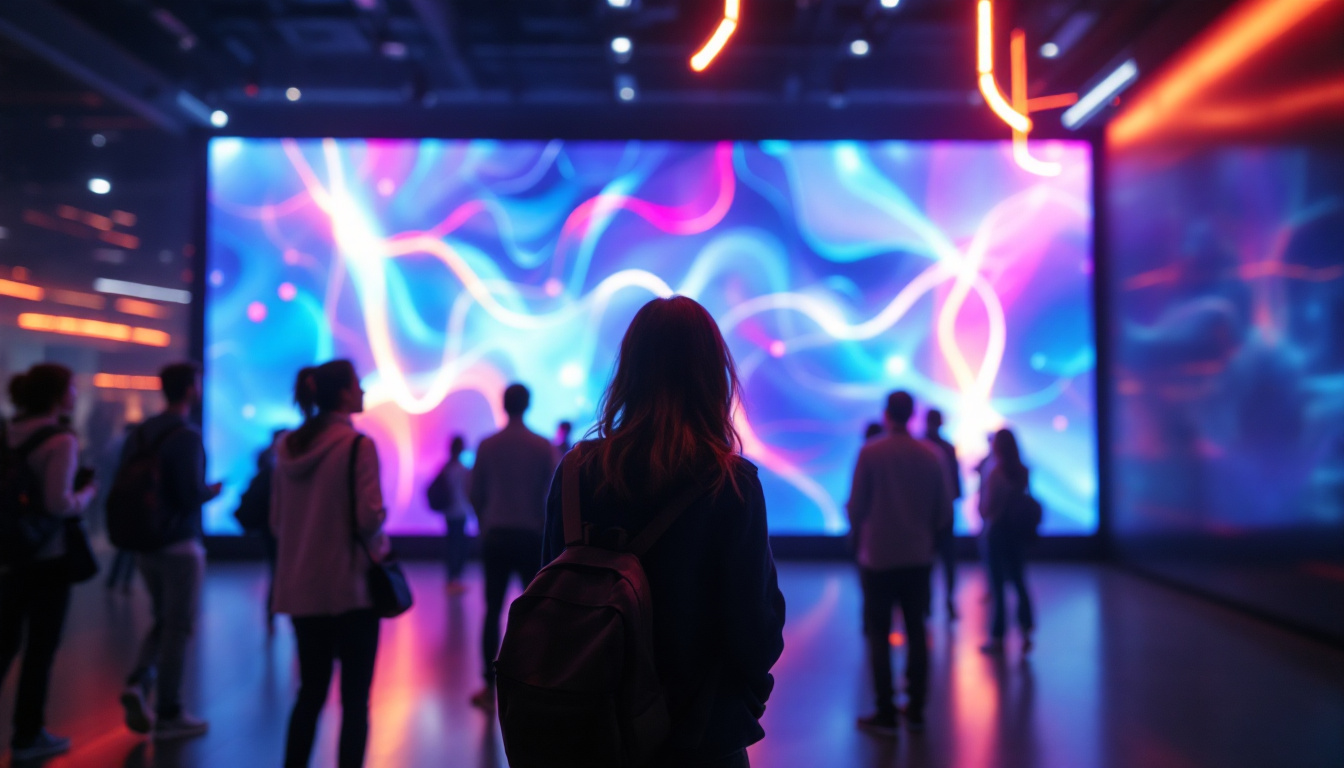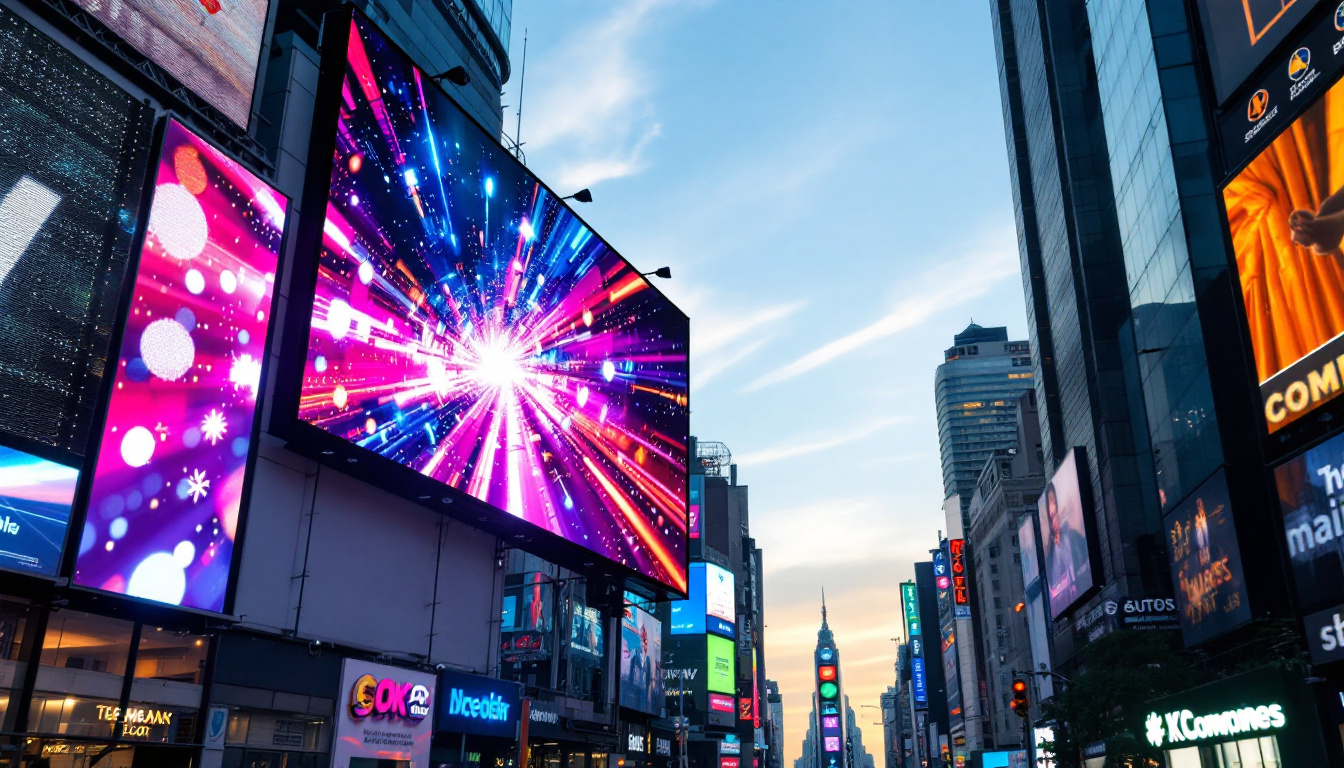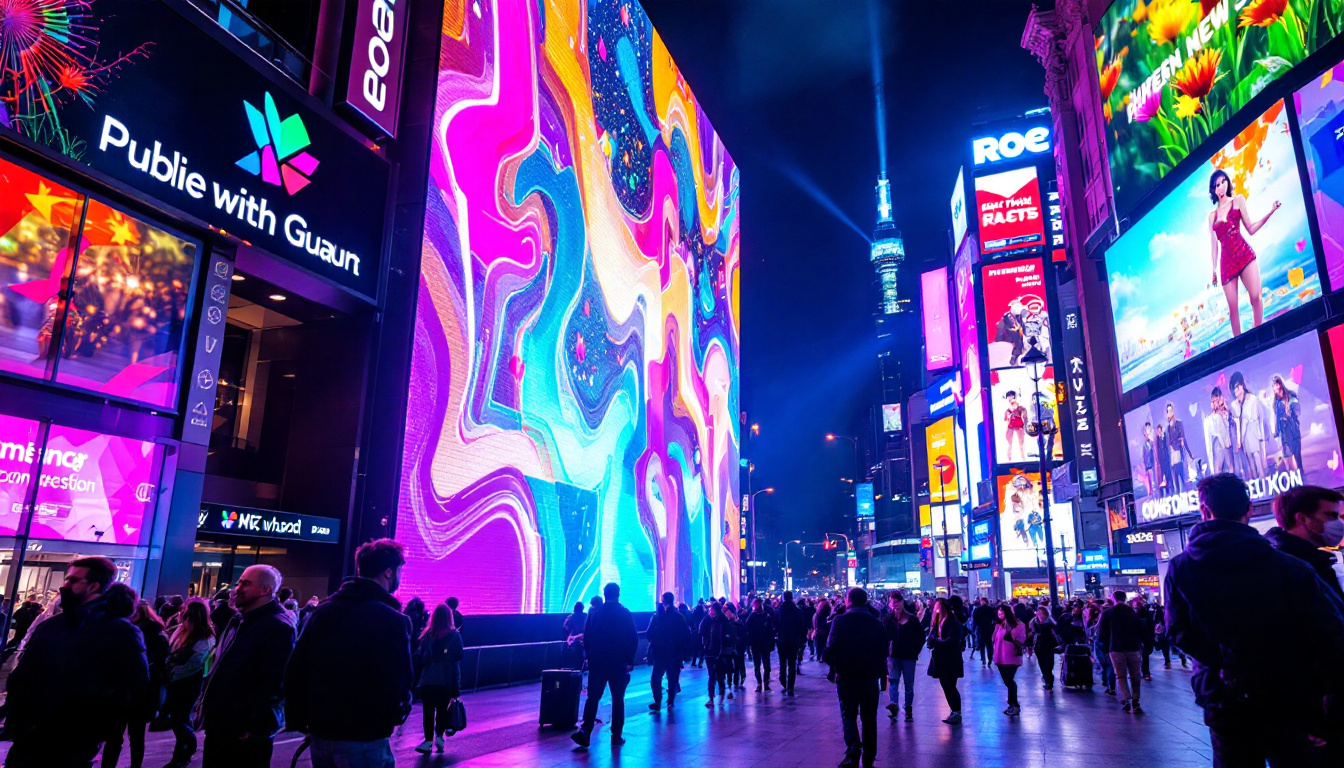In the rapidly evolving world of electronics, LED displays have emerged as a pivotal technology. Their versatility, efficiency, and vibrant visual capabilities have made them a preferred choice across various sectors, from advertising to consumer electronics. This article delves into the intricacies of LED displays, exploring their types, applications, advantages, and future trends.
Understanding LED Technology
LED, or Light Emitting Diode, is a semiconductor device that emits light when an electric current passes through it. This technology has revolutionized the way displays are designed and utilized, providing significant improvements over traditional display technologies such as LCD and CRT. The transition to LED technology has not only enhanced visual experiences but has also contributed to energy conservation efforts worldwide, making it a cornerstone of modern lighting and display solutions.
The Basics of LED Functionality
At its core, an LED display consists of numerous tiny diodes that light up in various colors to create images and videos. These diodes are arranged in a grid pattern, allowing for the formation of pixels. Each pixel can be individually controlled, enabling the display to produce a wide range of colors and brightness levels. This pixel-level control is particularly advantageous in applications such as digital signage and video walls, where dynamic content can be displayed with stunning clarity and vibrancy.
The efficiency of LED technology is one of its standout features. Unlike traditional incandescent bulbs, which waste a significant amount of energy as heat, LEDs convert a higher percentage of energy into visible light. This efficiency not only reduces electricity costs but also extends the lifespan of the display. In fact, many LED products boast lifespans of up to 50,000 hours or more, significantly outlasting their predecessors and contributing to reduced waste in the long run.
Types of LED Displays
LED displays can be categorized into several types, each designed for specific applications. The most common types include:
- Direct View LED (DVLED): These displays are composed of individual LEDs that form the entire screen. They are often used in large outdoor billboards and stadium screens due to their high brightness and visibility. The ability to withstand harsh weather conditions while maintaining image quality makes DVLED a preferred choice for outdoor advertising.
- LED Backlit LCD: This type combines traditional LCD technology with LED backlighting. It offers improved color accuracy and contrast compared to standard LCDs, making it popular in televisions and monitors. The backlighting technology allows for thinner screens and better energy efficiency, catering to consumer demand for sleek, modern designs.
- Organic LED (OLED): OLED displays use organic compounds to emit light. They provide superior color reproduction and contrast ratios, making them ideal for high-end televisions and smartphones. The flexibility of OLED technology also allows for curved and even foldable displays, pushing the boundaries of design and functionality in consumer electronics.
In addition to these primary types, there are also variations such as MicroLED, which promises even greater efficiency and pixel density, potentially leading to displays that are virtually indistinguishable from reality. This ongoing evolution in LED technology continues to open new avenues for innovation in various fields, from entertainment to medical imaging, ensuring that the impact of LEDs will be felt for years to come.
Applications of LED Displays
The versatility of LED displays allows them to be utilized in a wide array of applications. From advertising to entertainment, their impact is profound.
Advertising and Marketing
One of the most prominent uses of LED displays is in advertising. Digital billboards and storefront displays leverage the brightness and dynamic capabilities of LEDs to capture consumer attention. These displays can showcase vivid graphics, animations, and even real-time information, making them highly effective marketing tools.
Furthermore, the ability to change content easily allows businesses to adapt their messaging based on time, location, or audience demographics. This flexibility enhances engagement and can lead to increased sales. For instance, a restaurant can promote its lunch specials during the day and switch to dinner offers in the evening, ensuring that the content remains relevant to potential customers at any given time. This adaptability not only maximizes visibility but also allows for targeted marketing strategies that can significantly boost foot traffic and conversions.
Entertainment and Events
In the entertainment industry, LED displays play a crucial role in enhancing audience experiences. Concerts, festivals, and sporting events often feature large LED screens that display live feeds, graphics, and animations, creating an immersive environment.
Moreover, LED technology is widely used in theaters and cinemas for both stage backdrops and movie screens. The high contrast and vibrant colors of LED displays contribute to a more engaging visual experience for audiences. In addition to traditional uses, LED displays are increasingly being integrated into interactive installations, where audience participation can influence the visuals on screen. This trend is particularly popular in art exhibitions and immersive experiences, where the boundary between viewer and artwork blurs, creating a dynamic interaction that captivates and entertains.
Consumer Electronics
In the realm of consumer electronics, LED displays have become the standard for televisions, computer monitors, and mobile devices. Their ability to deliver high-definition images with excellent color accuracy has made them the preferred choice for consumers.
Additionally, the compact nature of LED technology allows for thinner and lighter devices, enhancing portability without compromising on quality. As technology continues to advance, the integration of LED displays in everyday gadgets is expected to grow even further. Innovations such as flexible LED screens are paving the way for new designs, enabling devices that can bend or fold without losing functionality. This not only opens up new possibilities for product design but also enhances user experience by allowing for more versatile usage scenarios. As manufacturers continue to push the boundaries of what LED technology can achieve, we can anticipate even more groundbreaking applications in the near future.
Advantages of LED Displays
The rise of LED displays can be attributed to their numerous advantages over traditional display technologies. Understanding these benefits is essential for businesses and consumers alike.
Energy Efficiency
One of the most significant advantages of LED displays is their energy efficiency. LEDs consume far less power than traditional incandescent or fluorescent lights, resulting in lower energy bills and a reduced carbon footprint. This efficiency is particularly beneficial for businesses that operate large displays, as it can lead to substantial cost savings over time.
Longevity and Durability
LED displays are known for their impressive lifespan, often lasting tens of thousands of hours. This longevity means less frequent replacements and lower maintenance costs. Additionally, LEDs are more resistant to shock and vibration compared to other display technologies, making them suitable for various environments, including outdoor settings.
Brightness and Color Quality
LED displays excel in brightness and color quality, providing vivid images even in well-lit conditions. This capability is particularly advantageous for outdoor advertising, where sunlight can wash out traditional displays. The high dynamic range (HDR) offered by LED technology allows for deeper blacks and brighter whites, enhancing overall image quality.
Challenges and Considerations
Despite their many advantages, LED displays are not without challenges. Understanding these limitations is crucial for making informed decisions in electronics sales.
Cost Factors
While the prices of LED displays have decreased over the years, they can still represent a significant investment, particularly for large-scale installations. Businesses must weigh the upfront costs against the long-term savings associated with energy efficiency and durability.
Additionally, the initial setup and installation of LED displays can be complex, requiring specialized knowledge and equipment. This factor may lead to additional costs that should be considered in the overall budget.
Environmental Impact
Although LED displays are more energy-efficient than traditional technologies, they still have an environmental impact. The production and disposal of electronic components can contribute to electronic waste, which poses a challenge for sustainability. As the demand for LED displays grows, addressing these environmental concerns will be essential for manufacturers and consumers alike.
Future Trends in LED Display Technology
The future of LED display technology looks promising, with ongoing advancements poised to further enhance their capabilities and applications.
MicroLED Technology
MicroLED technology represents a significant leap forward in display quality. These displays utilize microscopic LEDs to create images, offering even greater brightness, contrast, and energy efficiency than traditional LED displays. As manufacturers continue to refine this technology, MicroLED displays are expected to become more mainstream, particularly in high-end televisions and commercial applications.
Flexible and Transparent Displays
Another exciting trend is the development of flexible and transparent LED displays. These innovations allow for new design possibilities, enabling displays to be integrated into various surfaces, from windows to clothing. Such versatility could revolutionize advertising and consumer electronics, creating immersive experiences that were previously unimaginable.
Smart Display Integration
As the Internet of Things (IoT) continues to expand, the integration of smart technologies into LED displays is becoming increasingly common. Smart displays can connect to the internet, allowing for real-time content updates and interactivity. This capability enhances the user experience and opens up new avenues for businesses to engage with their customers.
Conclusion
LED displays have transformed the landscape of electronics sales, offering unparalleled advantages in energy efficiency, longevity, and visual quality. Their diverse applications span advertising, entertainment, and consumer electronics, making them an essential component of modern technology.
As advancements in LED technology continue to unfold, businesses and consumers alike must stay informed about the latest trends and developments. Understanding the benefits, challenges, and future potential of LED displays will empower stakeholders to make informed decisions in an ever-evolving market.
In summary, the journey of LED displays is just beginning. Their impact on the electronics industry is profound, and as technology advances, the possibilities for innovation are limitless. Embracing these changes will be crucial for anyone looking to thrive in the world of electronics sales.
Explore Cutting-Edge LED Displays with LumenMatrix
Ready to elevate your visual experience with the latest in LED display technology? LumenMatrix is at the forefront of innovation, offering a wide range of LED display solutions tailored to meet your needs. From captivating Indoor LED Wall Displays to dynamic Outdoor LED Wall Displays, and from versatile Vehicle LED Displays to sleek LED Poster Displays, our products are designed to revolutionize visual communication. Discover the power of LED Sports Displays, interactive Floor LED Displays, customizable Custom LED Displays, convenient All-in-One LED Displays, and the innovative LED Transparent Display. Embrace the future of digital signage with LumenMatrix and transform how you engage with your audience. Check out LumenMatrix LED Display Solutions today and start creating unforgettable visual narratives for your brand.

